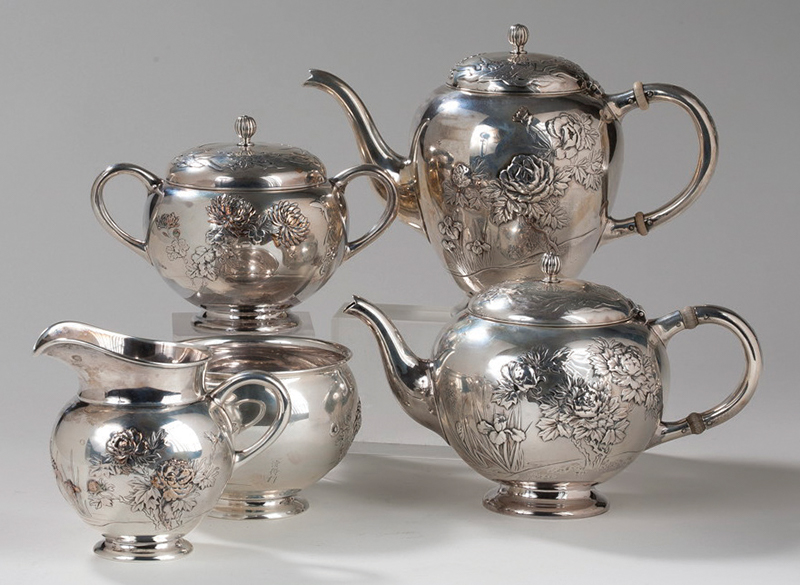
Fig. 8. Japanese Work Sample tea and coffee service number 8738, 1897–1898. Silver; coffee pot height 6 ¼ inches. Northeast Auctions photograph.
In 1897 the Gorham Manufacturing Company of Providence, Rhode Island, sent A. A. Vantine, a New York–based retailer of Japanese goods, about one hundred formed and assembled, but not yet decorated, pieces of silver. Vantine subsequently sent these pieces to Japan to be decorated by Meiji silversmiths. When completed, they were shipped back to the United States and returned to Gorham, which sold them at its flagship store at 19th and Broadway in New York City. This collaboration produced artistic masterpieces using an early global manufacturing network suggestive of the one that would blossom generations later during the last quarter of the twentieth century.
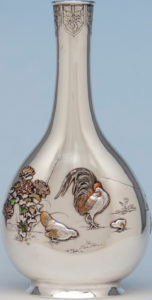
Figs. 1a., 1b. Two views of the Japanese Work Sample vase number 8727 made by the Gorham Manufacturing Company, New York, and Providence,
Rhode Island, and by unknown Japanese artists, 1897–1898. Silver and enamel; height 12 ⅜, width 6 ½ inches. Metropolitan Museum of Art; photographs courtesy of Spencer Marks, Ltd.
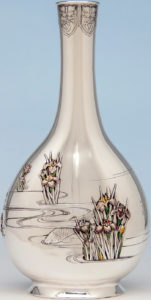
Little is known of this collaborative effort today. No business records remain from A. A. Vantine.1 The only records that survive are some costing records and photographs in the Gorham Manufacturing Company Archive at the John Hay Library at Brown University. They detail the creation of these pieces in Providence and the charges from Vantine, but little else. We have found no other evidence or documents in the archives that verify this relationship.
In Gorham’s terminology, these pieces were called “Samples,” unique or limited-production pieces initiated by management and the design department that were meant to represent the very finest art that Gorham could create. The most important pieces Gorham exhibited at world’s fairs were Samples.2
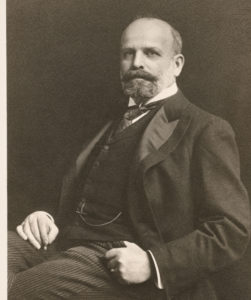
Fig. 2. Edward Holbrook, president of Gorham from 1894 to 1919, in a photograph of c. 1910. Gorham Manufacturing Company Archive, John Hay Library, Brown University, Providence, Rhode Island.
While it is dangerous to assume that the costing records from this period are complete, they seem more intact than those from other periods. According to these slips, “Japanese Work” or “Japanese Chasing” occurs on 114 discrete pieces that together form seventy-eight objects (e.g., a five-piece tea service) using ninety-five costing codes. Gorham was inconsistent in the use of these codes—sometimes a five-piece service might use five costing codes, sometimes one. Typically, Gorham did not mention the name of outside vendors in these costing slips, but sixty-five of the ninety-five Japanese Work records mention Vantine. Gorham’s records indicate these pieces were “made” (meaning they were formed and assembled, but not decorated or finished) between March and May of 1897.3 The final costing records were created after the objects were returned from Japan and Gorham knew the appropriate charges from Vantine—accounting for differences between dates on the costing slips and Gorham datemarks on the objects.
Considering that Gorham was one of the largest silver companies in the world and produced hundreds of thousands of items per year, the Japanese Work pieces are incredibly rare. Furthermore, they were expensive—costing as much as equivalent pieces made in the nascent hand-wrought Martelé line, considered the most important American art nouveau silver ever made. Gorham made just over eighty-two hundred pieces of Martelé,4
but only about one hundred Japanese Work pieces. These unique objects were made for a very small group of wealthy collectors and connoisseurs.
The only other known written evidence of this line is in an 1898 article in the New York Times, which states:
The India chasing is some of the finest work and most refined to be found in silver. . . . There is Russian work in silver, and designs from almost all countries are reproduced here, except Japan. The Japanese have their own original ways of doing their silver work, which is a combination of chasing and applied work, and shows the characteristics of the country. So when the American manufacturer wishes Japanese designs made from his own silver he sends it to Japan, and there the silversmiths of the country put on their chrysanthemums and their monkeys, making them stand out as in life, or incised, and they come back to America silver with the pure Japanese design.5
The fabrication of a silver object in the late nineteenth century involved the work of many highly skilled specialist artisans. First, the piece was formed either entirely by hand or with varying combinations of handwork, spinning, stamping and/or casting. It was then assembled by soldering the various pieces together. Generally, Gorham’s creative role ended at this stage in the Japanese Work pieces. Decorating came next, in the West, typically involving chasing, engraving, and /or repoussé work. Engraving is the decorating of silver by removing small parts of the silver, chasing is moving the silver without removing it, and repoussé work involves chasing decoration into areas raised from behind. In the West, this is typically done by specialist artisans and chasers, who are considered some of the finest who work in silver. Gorham’s best chasers worked in a room known as the “House of Lords.”6
In Japan the decorator of metalwares is called a “carver,” indicating a set of complex skills mastered by the artist, including engraving, applying, inlaying, onlaying, and what we call chasing. Some silversmiths in the West acquire these skills, but many do not.
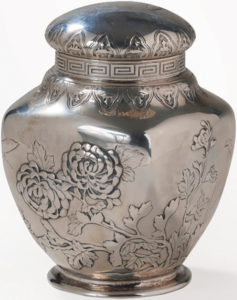
Fig. 3. Japanese Work Sample tea caddy numbered 8732, 1897–1898. Silver; height 4 ¾ inches. Photograph courtesy of Northeast Auctions.
Enameling is a separate craft done by specialist artists in both hemispheres. While the Japanese engaged in enameling during the seventeenth century, the craft was greatly expanded and improved after the Meiji restoration, as Japan modernized its industries. During the 1870s German chemistry professor Gottfried Wagner, who specialized in glass and enamel, taught and consulted in Kyoto and Tokyo, two important centers of Japanese enameling. It is widely acknowledged that by the turn of the twentieth century, Japanese artists were some of the finest enamelers on earth.7 Gorham’s records of the Japanese Work rarely mention enamel, even though many pieces are enameled. Examining extant black-and-white archival images of Japanese Work, we estimate that half or possibly more of the pieces were enameled. One of these masterpieces can be seen in Figures 1a, 1b. Raised by hand in oval, the vase has a hand-raised conforming foot underneath. On one side, a koi swims through a fluid swirling stream with irises growing along the banks. While the motion of the stream evokes art nouveau design, the naturalistic decoration is wholly Japanese. Both sides are decorated with basse-taille enamel decoration. The applied pieces are chased to create an edge for the enamel, and the areas underneath the translucent enamel are engraved to further enhance it. Layers of enamel are built up with different colors in separate firings and then polished down when the appropriate depth is reached. The koi side features purples, reds, and greens, while the other side, with a rooster, displays a more complex palette of earth-toned colors.
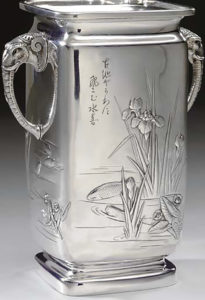
Fig. 4. Japanese Work Sample vase number 8795, 1897–1898. Silver; height 9 inches. Photograph courtesy of Christie’s.
The costing slip for the Sample 8727 vase, dated December 12, 1898 (Fig. 9; discussed in detail in the sidebar), notes it had a “net” cost of $108. By examining Gorham’s records, we believe that at this period this net amount represented about 80 percent of the retail price, so this vase would have been priced at around $135 retail8 (a price comparable to that of similar Martele vases made at the time9). Adjusting for the historic standard of living, or inflation, that price is a little more than $4,000 today. But inflation does not tell the whole story, as the cost of producing such a vase today is very difficult to project.10
The use of enamel does not seem to have made a significant difference in the charges by Vantine. Costing records indicate that the Japanese Work on the enameled vase at the Met cost Gorham $26.89, while that on the vase in Figure 4, sold at Christie’s,11 and apparently never enameled, came to $29.23.
An interesting feature of the Christie’s vase is the elephant-head handles. Gorham used these handles on pieces of Indo-Persian design, and the designers at Gorham at this time, led by William C. Codman, felt comfortable interchanging the two styles even when the goal was “pure Japanese design.” Originally, the surface of the Christie’s vase was artificially oxidized to contrast the polished highlights with the darkened background, a process widely used on Western silver at the time.
Artistic Japanese writing appears on some of the pieces and adds depth and complexity to their decoration. Some bear artist signatures. The signature on the teapot of the service in Figure 8 translates as “made by Seishiro,” while the signature on the vase at the Metropolitan Museum of Art is only partially legible. Other pieces have more engaging inscriptions. One tray is decorated in the center with traditional Japanese sayings of good fortune and happiness. The vase in Figure 4 is inscribed with a delightful haiku by Basho:
Into the ancient pond
A frog jumps
Water’s sound! 12
Including auspicious sayings and haikus would have greatly enhanced the enjoyment of these pieces for connoisseurs with the ambition to translate the phrases, as some surely did.
Another masterpiece, now in the collection of the Philadelphia Museum of Art, is the jewel-like tête-àtête service in Figure 5, which includes cloisonné enamel work. The cloisonné decoration is done in the traditional Meiji style, with twisted wires and slender bands that define the contours of the enamel. The wires were soldered to the vessels in the shape of the decoration. The enamel was then painted in and fired many times, using different colors as necessary, until the area was overfilled. As with basse-taille enamel, the enamel was then polished down to the correct height to create a lustrous, even surface. Phoenixes, bats, and butterflies fly among floral and foliate decoration, brilliantly executed in a style similar to that used for imperial diplomatic gifts made in Kyoto workshops.13 Even the smaller elements, the butterflies, chrysanthemum blossoms, and leaves, show wonderfully skilled gradations of color. The butterfly finial on the teapot lid is an interesting feature (Fig. 6). Though the Meiji artisans embellished it with enamel, the butterfly finial had been used to decorate Gorham saltcellars since about 1870. As with the handles on the Christie’s vase, Gorham’s designers incorporated one of the firm’s production elements on a unique Sample piece.
Ashley Abraham Vantine (1821–1890) understood early on the commercial implications of the opening of Japan, and, in 1866, opened his New York City retail store selling imported Japanese goods. As Japanese design became increasingly popular, Vantine’s business thrived. In 1875 he took James Raymond as a partner, and, after Vantine’s retirement in 1887, Raymond became president and sole owner.14
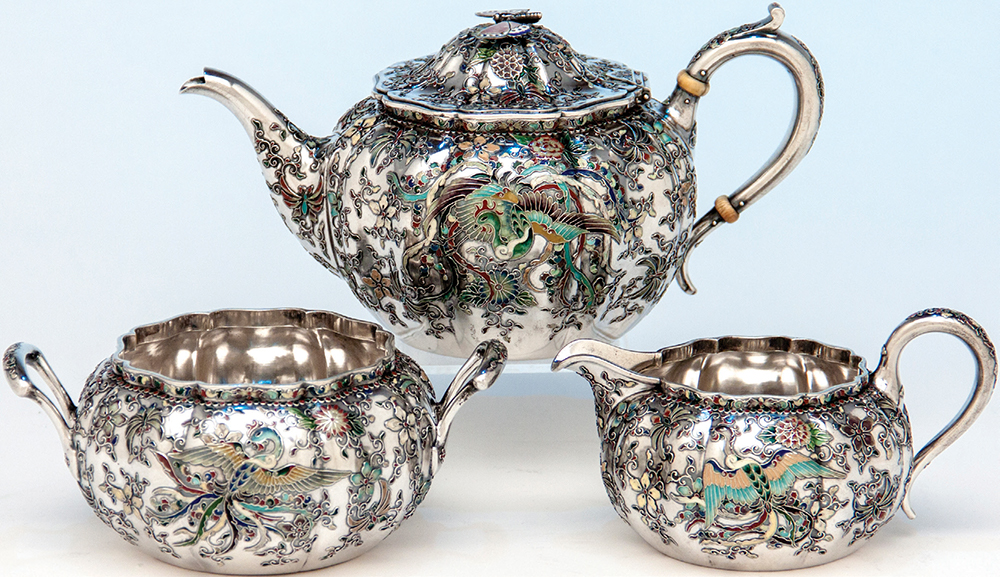
Fig. 5. Japanese Work Sample tête-à-tête service number 8768, 1897–1898. Silver and enamel: teapot height 3 ¾ width 7 ½ inches; sugar bowl height 2 ⅜, width 5 ¾ inches; milk pot height 2 ¾, width 5 inches. Philadelphia Museum of Art, purchased with funds contributed by Marguerite and Gerry Lenfest; photograph courtesy of Spencer Marks, Ltd.
Japan developed a trade system based on the Chinese model of trade ports and licensed foreign merchant houses to insulate the populace from Western traders. In 1890 Raymond established Vantine as a licensed trading house with offices in Yokohama and Kobe, and, in 1892, Nagoya, an important porcelain, metalworking, and enameling center.15 This gave Vantine the ability to trade directly with Japanese artists and entrepreneurs, providing the firm the ability to both wholesale and retail a wide variety of Japanese objects (textiles, ceramics, furniture, and metalwares, including silver) on an unparalleled scale in the United States.16 Vantine advertised in retail and wholesale publications as diverse as Siegfried Bing’s Artistic Japan and The Jewelers’ Circular and Horological Review. During the 1890s Vantine increasingly focused on expanding its lower-end commercial and bric-a-brac market as other Japanese experts, such as the antiques dealer and auctioneering firm of Yamanaka, successfully competed for the high-end connoisseur market.17
At Gorham, director Edward Holbrook purchased controlling interest in the company during the 1880s, becoming treasurer in 1888, thereby completing his control of the company.18 Holbrook’s ambition to expand into high-end lines can be clearly seen at the World’s Columbian Exposition of 1893, where Gorham introduced new and very expensive lines of enameled silver, silver deposit on glass and Rookwood pottery, silver-mounted cut glass, gilt silver, and glass blown into silver.19 Gorham even displayed an electrified silver centerpiece with a retail price of $1,975.19
Other than costing slips, we have found no business records that document the collaboration between Gorham and Vantine; however, the close relationship between Holbrook and Raymond can be clearly established. The first public record of this relationship appears in 1889, when Vantine donated $5,000 to Gorham’s $100,000 fund-raising appeal, supporting the effort to attract the 1893 World’s Fair to New York.21 Between 1890 and 1892, Holbrook hired Stamford, Connecticut, builder Selleck St. John to build his country house,22 which he named the Uplands, on Strawberry Hill Avenue in Stamford.23 Raymond was already established in his country house on the same street, only a short distance away. Both loved their country homes and neighborhood—each ultimately dying in his house there.24 While they would have been close neighbors and friends in the 1890s, just after the turn of the century the two families became in-laws when Raymond’s son, Irving, married Maud Sinclair, and Holbrook’s son, John, married her sister Grace Sinclair.25
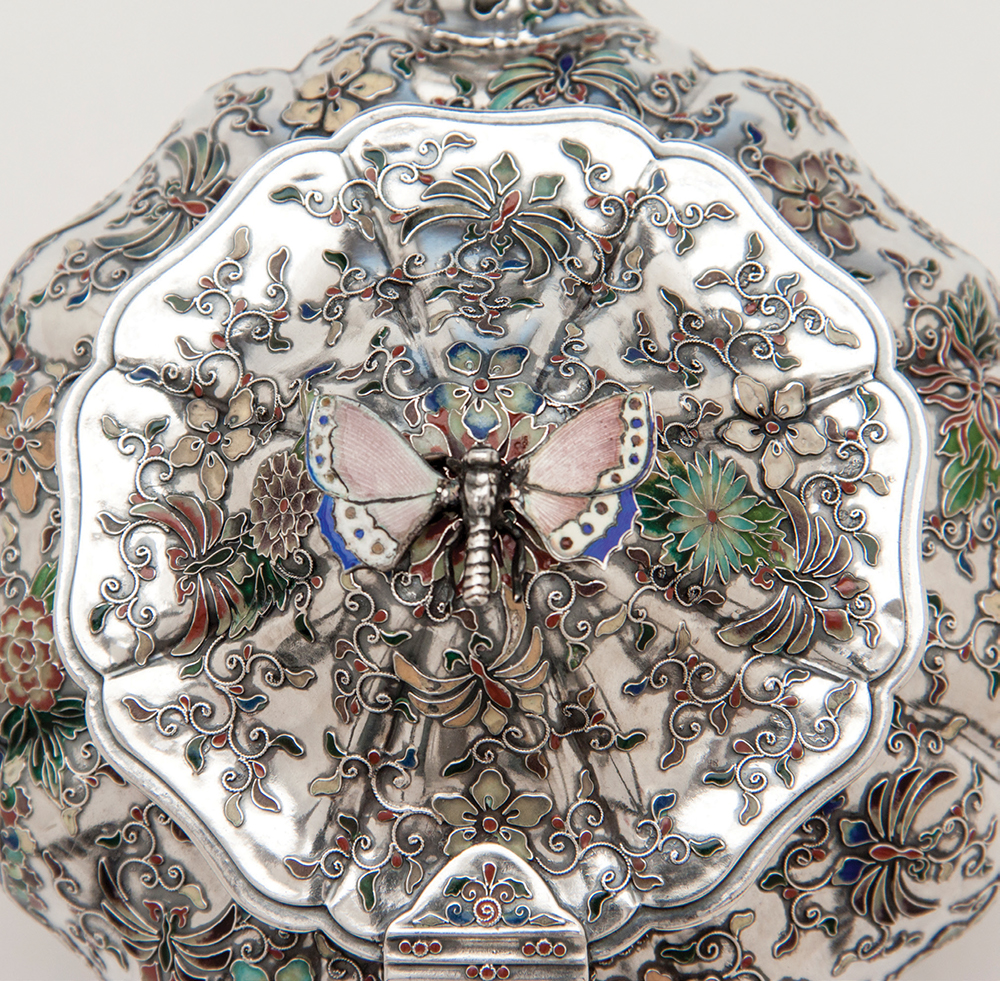
Fig. 6. Detail of butterfly finial and lid of the teapot on the tête-atête service in Fig 5.
Gorham’s Japanese Work collaboration with Vantine was born of the men’s relationship. One of the more interesting aspects of this line is that Gorham created no similar inexpensive line. During the 1870s and ’80s, Gorham’s Japanesque mixed-metals exotica is accompanied by more commercial and less expensive pieces, including flatware, with Japanese-style decoration. This is not the case in the late 1890s with this partnership. We believe the limited nature of the Japanese Work line was planned by Holbrook and Raymond. Together, they would have been able to analyze the market, and Raymond would have understood the pricing pressures Gorham would have faced with a low-end line when artisans in Japan earned so much less than comparable ones here. It would have been an easy (and convenient) decision to leave the lower-end and bric-a-brac market to Vantine. Moreover, as an official trading house, Vantine would have been the perfect partner to find skilled Meiji metal carvers and enamelers to work on Gorham’s finest silver. Holbrook saw a market and a new line; together, he and Raymond created an international manufacturing network to produce these pieces.
Gorham’s records document an interesting group of objects made during this collaboration. According to Gorham’s costing slips, fifty-seven pieces were returned from Japan for sale in 1898, thirty-four in 1899, and two in 1901. (The other two slips are undated, but the pieces would have been available for sale during this period.) In total, extant costing slips show approximately 1,973 troy ounces of silver costing $1,376.33 being used to create these pieces. Making costs were $870, representing about 2,486 hours of labor raising and assembling. The total net cost, or wholesale price, was $8,524.79, or about $10,230 total retail. In today’s money, the retail price of the seventy-eight objects would be about $299,000, adjusting for the historic standard of living.26
The products cover a wide range of domestic objects, including pitchers, bread trays, bowls for salad or fruit and berries, cups, a child’s cup and flatware set, a vanity (toilet) service for a lady, and two “toddy” kettles for men to warm and serve their brandy-based toddies after dinner.
In a clear indication of Holbrook’s marketing strategy, Gorham’s designers made forty-eight discrete pieces of tea wares—tea pots, creamers, kettles, and the like, including ten tea caddies. Another fifteen pieces were vases and six were “love,” or loving, cups—two- or three-handled vessels often used as vases. In short, nearly two-thirds of the pieces made during this collaboration were associated with the tea ceremony or flower arranging—two customs firmly associated with Japan in the Western mind of the 1890s.
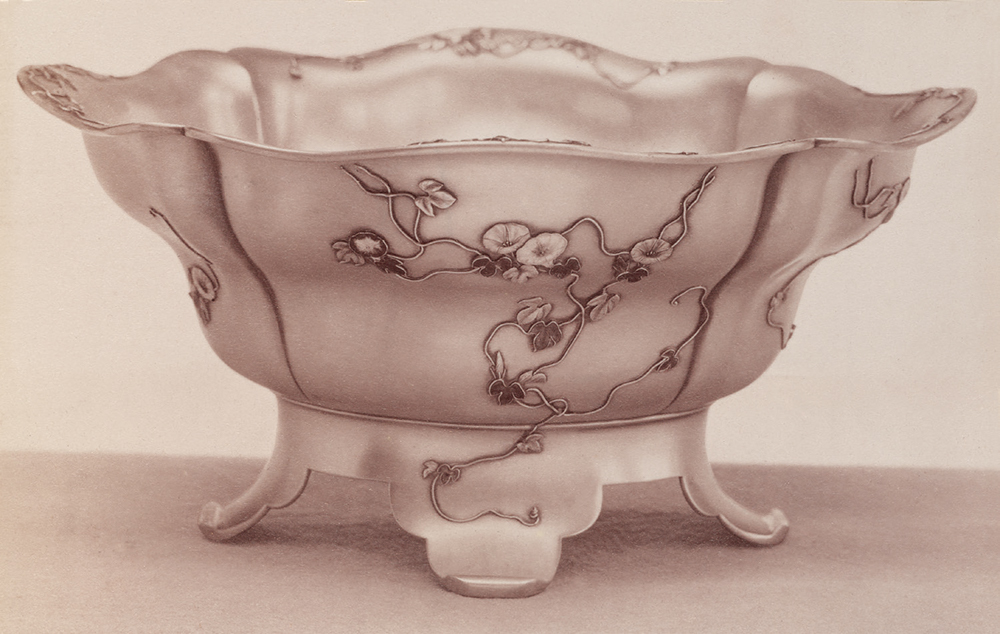
Fig. 7. Japanese Work Sample salad bowl number 8747, 1897–1898. Silver and enamel; dimensions unknown. Gorham Manufacturing Company Archive.
These pieces bridged a cultural gap and provided a small group of erudite and wealthy collectors with the ability to buy high-end authentic Japanese decoration on high-quality Gorham silver in forms they could appreciate artistically and romanticize culturally. Unlike the Asian art they collected, they could use these domestic objects for entertaining in high style, displaying the rarefied taste (not to mention wealth) of owners who used “pure Japanese design” in their daily life.
As with its beginning, the end of the brief collaboration between Vantine and Gorham is undocumented. As a vendor, Holbrook must have been frustrated to have so much capital tied up in a venture that was so slow coming to fruition and sale. More important, major changes were occurring in Japan’s relations with the outside world. In 1899 Japan ended the treaty port system, allowing direct trade between foreigners and the Japanese.27 In 1898, likely in conjunction with this change, the Japanese government announced a sweeping series of import tariffs on foreign-made goods. This included a 35 percent ad valorem tax on silver and gold,28 creating a significant cost increase for Gorham. While restricting trade in one way, the greater opening of Japan allowed Gorham other options and opportunities—such as finding a Japanese master to work in Providence. The creative collaboration between Holbrook and Raymond was dependent on the improving transportation and communication technologies of the late nineteenth century and would not have been feasible a generation earlier. It seems unlikely that they could have foreseen, in this pioneering partnership, how they would be a precursor to our globalized manufacturing network of today.
We would like to thank Medill Harvey, Beth Carver Wees, David Barquist, and Sam Hough, along with Holly Snyder, Tim Engels, and the rest of the Special Collections team at the John Hay Library, Brown University.
1Yumiko Yamamori, “A. A. Vantine and Company: Japanese Handcrafts for the American Consumer, 1895–1920” (PhD diss., Bard Graduate Center: Decorative Arts, Design History, Material Cultural, 2011), p. 5. 2 Using nomenclature begun in the late 1870s, Gorham separated internally generated orders, called “Samples,” from “Specials” which were externally generated special orders from retailers such as J. E. Caldwell & Co. in Philadelphia. 3 “Gorham-Silver-Hollow Ware-Samples 1893–1898” ledger, Gorham Codices Box 2, Gorham Manufacturing Company Archive, John Hay Library, Brown University, Providence, RI. This ledger contains contemporaneous records of silver weights and confirms the accuracy and completeness of most of these costing slips. 4 L. J. Pristo, Martelé: Gorham’s Art Nouveau Silver (Phoenix Publishing Group, Phoenix, 2002), p. 139. 5 “Silver For American Tables,” New York Times, December 11, 1898, p. 20. 6 Samuel J. Hough, “The House of Lords: The Chasers of Martelé Silver,” in John Webster Keefe, Magnificent, Marvelous Martelé: American Art Nouveau Silver (New Orleans Museum of Art, New Orleans, 2001), pp. 21–30. 7 Dr. Fredric T. Schneider, “Japanese Cloisonné Enameling on Glass Substrate, from the Late Nineteenth Century to the Present” lecture for the 3rd Biennial ICOM-CC Experts’ Meeting on Enamel on Metal Conservation at the Frick Collection, October 8–9, 2010, youtube.com, last accessed July 24, 2017. Schneider discusses Wagner from about minutes 9–12. 8 Gorham is inconsistent with this retail markup and it changes over time. However, during the 1880s and ’90s, the few records of retail pricing we have found indicate a typical 25 percent retail markup for non-exhibition pieces. 9 Pristo, Martelé, pp. 170, 198. 10 Another way of looking at the cost is through the metric of production-worker wages, in which the $135 retail price translates to about $33,700, according to meauringworth.com, last accessed July 24, 2017 11 Christie’s sale number 1617, January 20–21, 2006, lot 104.12 2016 and 2017 conversations and emails with Medill Higgins Harvey, assistant curator of American decorative arts, Metropolitan Museum of Art, and Beth Carver Wees, Ruth Bigelow Wriston Curator of American Decorative Arts, Metropolitan Museum of Art. We are grateful to Monika Bincsik, assistant curator, department of Asian art, for her translations. 13 2016 conversations with David L. Barquist, H. Richard Dietrich Jr. Curator of American Decorative Arts, Philadelphia Museum of Art. 14 Yamamori, “A. A. Vantine and Company,” pp. 22, 79. 15 Ibid., pp. 100–101. 16 Ibid., pp. 102–103. 17 Ibid., pp. 23–24. 18 Charles H. Carpenter Jr., Gorham Silver: 1831–1981 (Dodd, Mead & Company, New York, 1982), p. 136. 19 “Gorham at the 1893 Columbian Exposition in Chicago,” spencermarks.com, last accessed July 24, 2017. 20 Invitation to Visit the Gorham Manufacturing Company Exhibit in the Manufactures and Liberal Arts Building (Gorham Manufacturing Company, Providence, 1893), n. p., Gorham Manufacturing Company Archive. 21 “The Gorham Co’s Subscription Book,” The Jewelers’ Circular and Horological Review, December 1889, p. 40. Gorham donated $25,000 to this effort and Gorham’s employees in New York City, another $3,245. The primary reason New York failed in this attempt was that there was no suitable location for the fair as there was in Chicago. New Yorkers refused to use (and destroy) the fair’s only sensible location, Central Park. 22 Edward T. W. Gillespie, Picturesque Stamford: A Souvenir of the Two Hundred and Fiftieth Anniversary of the Settlement of the Town of Stamford, Containing an Historical Sketch, Covering Salient Points of Stamford’s History From 1641 to 1892 (Stamford, CT, 1892), p. 292. 23 July Dilatory Domiciles Social Register Summer 1919: All Cities (Social Register Association, New York, 1919), p. 133. 24 “Edward Holbrook,” obituary in the New York Tribune, May 20, 1919; and “James I. Raymond Dead: President of Vantine & Co. Succumbs to Effects of Operation,” New York Times, April 19, 1905. 25 All three family genealogies are accessible on ancestry.com. 26 Or about $2.5 million, adjusted for the value of production-worker wages, according to measuringworth.com, accessed July 24, 2017. 27 Yamamori, “A. A. Vantine and Company,” p. 81. 28 “New Japanese Tariff,” The Jewelers’ Circular and Horological Review, September 21, 1898, p. 9.
SPENCER GORDON and MARK McHUGH are silver dealers specializing in the nineteenth and twentieth centuries, doing business as Spencer Marks, Ltd.
